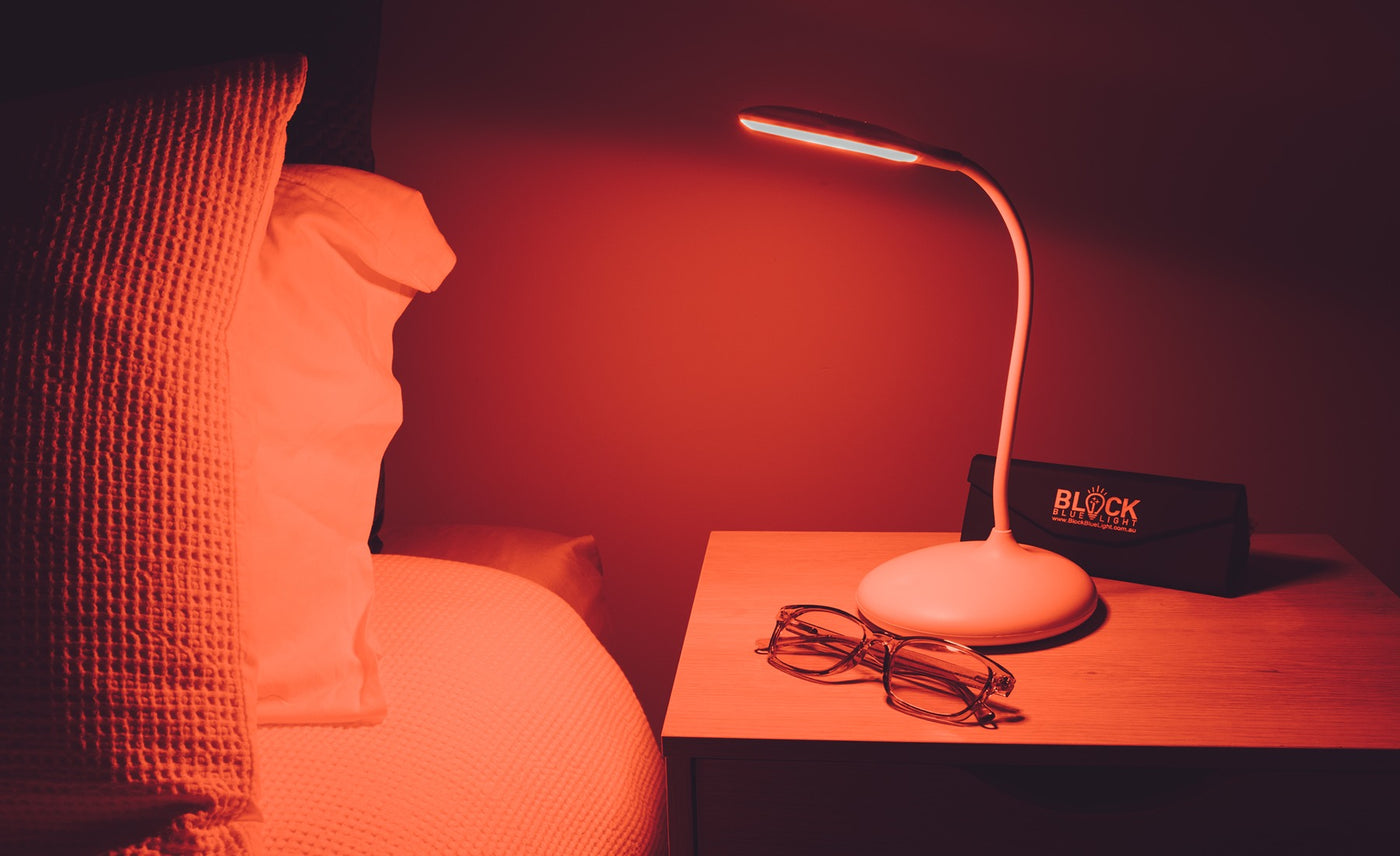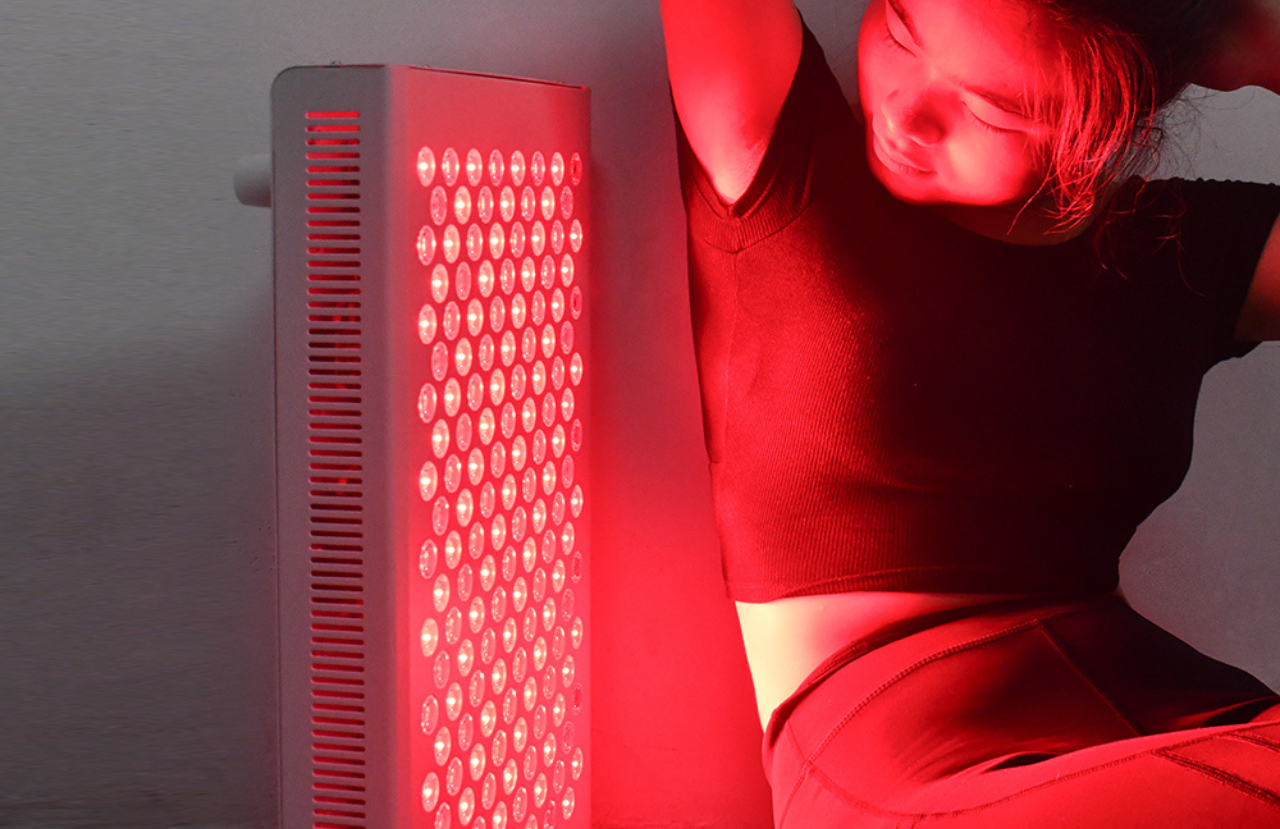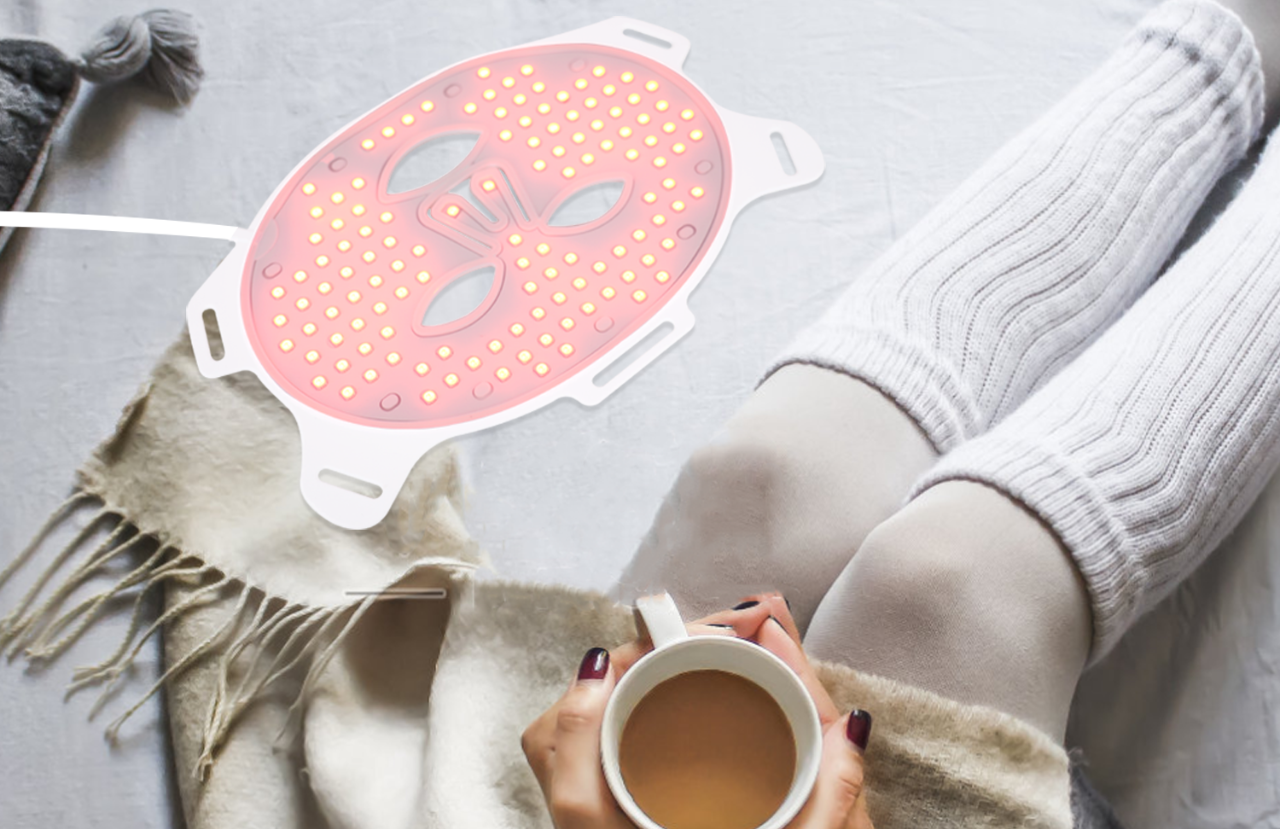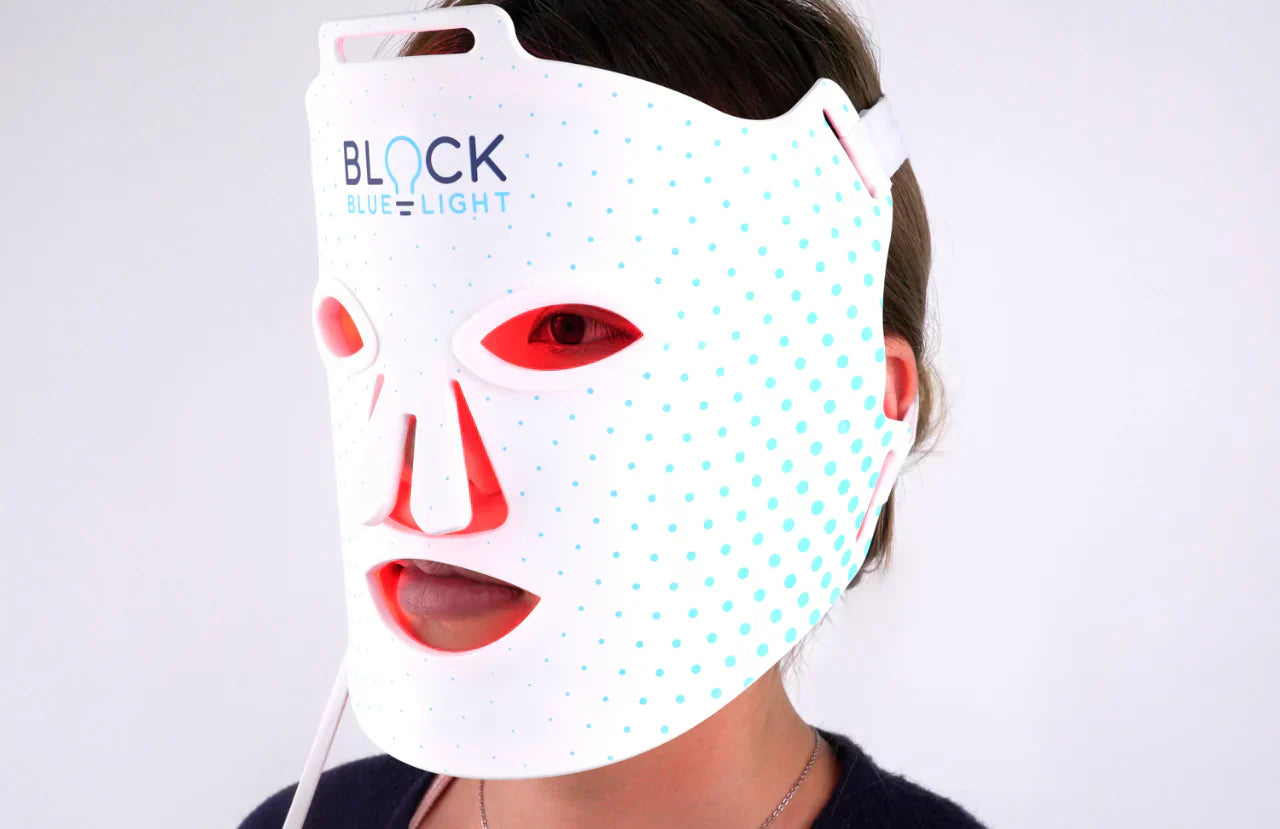Although it's fine to be sleeping with red lights on because red light doesn’t interfere with your sleep the way blue light (regular white light does), the healthiest way to be sleeping is in complete darkness. This is because after sunset, there is no light and to mimic nature, all lights should be switched off at night. Using red light before going to bed, however, does improve sleep quality. Continue reading to find out how this works.

If you’re having problems with falling asleep at night, you’re not alone- sleep problems have become prevalent across the globe over the recent years and have become more common since Covid-19. In fact, according to a recent study, 2 out of 5 Australians struggle with sleep on a regular basis. That's 40% of the entire population meaning 10.3 million people!
Sleep problems directly correlate with diabetes and heart disease and 40% of Australians die due to these 2 causes combined. In cases of sleeplessness, worries of family members, illnesses and technology distractions were the main causes. In fact, 21% of people blame technological distractions as the primary culprit for not being able to fall asleep at night.
Let’s understand how we sleep to know why sleeping with red lights on is a good idea.
Our bodies fall asleep due to 2 processes:
- Our circadian rhythm
- Sleep pressure
These two pathways signal our brain when it’s time to wake up or go to sleep and make sure that we have good sleep quality.
The circadian rhythm

The Circadian rhythm is the body’s internal clock- As human beings evolved, we developed this biological clock. Located in the suprachiasmatic nucleus (SCN) in the hypothalamus of the brain. This ‘master clock’ uses external stimuli from the environment such as temperature and light to regulate our sleep and wake cycles.
These stimuli are called ‘zeitgebers’. The strongest zeitgeber is light. The internal clock translates the colour and wavelength of the light to decide what time of day it is. From sunrise till just before sunset, the bright (blue light) light coming from the sun signals that it’s day and time to be awake and alert. The way sunlight delivers this message is through intrinsically photosensitive retinal ganglion cells (ipRGCs) on our retina. These cells have a single function- to detect and absorb blue light from the environment and relay it to the hypothalamus.
When evening arrives, blue light is replaced by amber and red light from the sun. The lack of blue light means the body relaxes and falls into a sleepy state. In ancient times when our ancestors lighted campfires at night, the warm red glow from the fire accomplished the same tasks.
The same task is accomplished when you use red lights before bed - red light makes the brain believe it’s time for bed and induces sleep.
How does the brain differentiate colours of light?
It’s done through their wavelengths; blue light has a shorter wavelength and thus carries higher energy. In contrast, red light has the lowest energy out of all the colours of light.

Sleep pressure
Sleep pressure is another system which helps us fall asleep at night- this does not require external stimuli from light though. Sleep pressure arises from the food we eat and the energy we burn throughout the day. When we go about our day, our body burns adenosine triphosphate (ATP) to produce energy. This process leaves a by-product called adenosine behind. When the levels of adenosine reach a particular level, the body realises it’s time to sleep. Burning more energy throughout the day (such as by going to the gym or doing heavy work) may make you tired earlier.
Using adenosine inhibitors such as caffeine which is found in coffee, tea, energy drinks and carbonated drinks tricks the brain into thinking the body has more energy than it actually has and thus makes us more alert.
Is it a good idea to be sleeping with a red light on?
Putting red light on before you go to bed is a great idea because red light stimulates the secretion of melatonin, the hormone responsible for making us sleepy. It also improves muscle regeneration which helps with muscle gain. This helps improve sleep quality and therefore improves your performance throughout the day.
Red light doesn’t have the wakefulness effect of blue light - thus it's a smart idea to use red lights instead of regular LED lighting (which contains blue light) as evening approaches. However, we suggest that even red lights be switched off overnight. But if you have a child who is afraid of the dark, or if you have to get up at night for any reason- whether it’s breastfeeding, checking on your children or going to the bathroom, leaving on a small red light will help you see, without making your sleep go away!
Does sleeping with a red light on reduce sleep inertia?
Using red lights before going to bed helps reduce sleep inertia- You know the groggy feeling you get when you wake up. It can take you some time before you’re fully alert. A 2019 study showed that saturated red light administered through closed eyelids may help ease sleep inertia when you wake up.
Does red light improve night vision?
Red light doesn’t give you batman eyesight, but it helps you see better at night. Switching a white light on suddenly may cause you to squint and strain in the middle of the night.
What can I do for better sleep?
To improve your sleep, reduce your use of blue-light emitting devices such as mobile screens, laptops and TVs. Don’t take stimulants like coffee or energy drinks after sunset. Above all, don’t switch on bright LEDs and bulbs. Switch to sleep-friendly lighting options instead.
There are 2 ways to go about using sleep-friendly lighting:
Use amber or red lights
These tinted bulbs can be used as night lights or while you are in bed. The best thing about them is that they give you just enough light to read, without affecting your sleepiness.
Things to look for when buying amber or red lights:
For nighttime bulbs to be effective, they must filter turquoise light, as well as blue light. Research has shown that green light also disrupts melatonin production. Our Twilight Bulb blocks 100% of blue and green light from 300-550 nm. Any less than this range and you won’t be benefitting from the full effects of blue-free lighting
When picking blue-free lighting, it’s important that you pick the right product that works to mimic natural lighting conditions. All of BlockBlueLight’s bulbs and lamps have been verified to be free of blue light (you can check the spectral test reports for each product). They also use flicker-free technology and are low EMF.
Go for a BioLight (the best option!)
A better solution is to use a full-spectrum LED light bulb. Full-spectrum light bulbs mimic sunlight and provide the correct wavelengths of light throughout the day.
Full-spectrum light bulbs should have three modes:
Daytime mode:
The daytime mode provides adequate amounts of blue light.
Evening mode:
The evening mode provides low levels of blue light and some degree of red/amber light, to mimic the colours at sunset. These colours start preparing the brain to slow down for sleep.
Night mode:
At night, there’s no sun so we shouldn't be exposed to any blue light. Even the slightest blue light (such as switching on the bathroom light) halts the production of melatonin. So the night mode is 100% blue light free. To do this, the bulb has to emit red light.

References:
https://www.healthline.com/health/why-not-to-have-red-lights-on-at-night#summary
https://www.ncbi.nlm.nih.gov/pmc/articles/PMC3499892/#:~:text=Based%20on%20previous%20studies%2C6,pineal%20gland%20and%20muscle%20regeneration.
https://www.ncbi.nlm.nih.gov/pmc/articles/PMC6506010/







